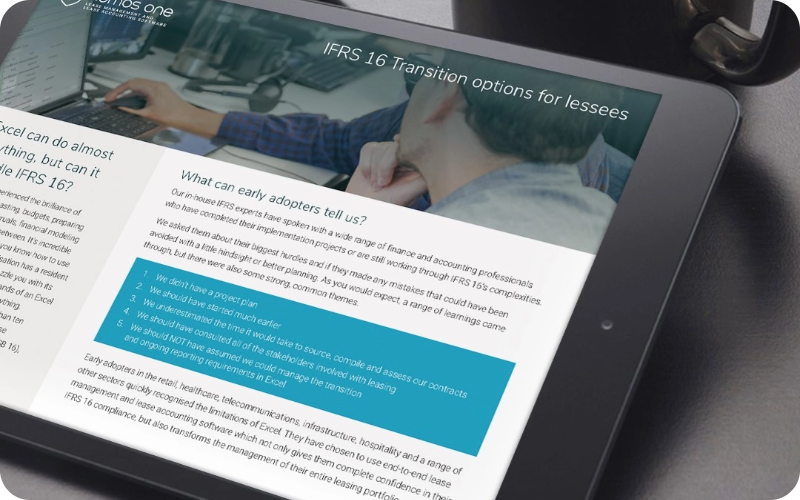IFRS 16 is complicated. When it comes time to review your balance sheet and profit and loss accounts at the end of the reporting period, it can be challenging to get an intuitive feel for how these numbers are made up. This isn’t surprising, as up to 50 different components can be included in an individual lease agreement calculation, and this is before we start accounting for any changes to this information.
That’s why we have put together the three most important reasons your team needs to include the Daily Calculation Report (DCR) as part of your Nomos One lease accounting toolkit.
Getting to grips with the detail
The DCR uses the language of accountants to establish precisely how each balance sheet and profit and loss account is calculated over every day of the lease. This spreadsheet uses formulas & cell referencing to give the entire financial model of the lease for the information currently entered through the agreement.
This allows users to get in behind the numbers and see how their balance sheet accounts are calculated at a time that otherwise would be a number on a screen.
Understanding the payment series (the bread & butter of lease accounting)
If you want to understand something, first you need to understand its underlying mechanics.
The mechanics of lease accounting all come down to the payment series. The payment series is the projected lease payments extending over the expected life of the lease, and these payments are then discounted back to reflect the lease liability.
As the payment series extends into the future, assumptions have to be made around what the rent might be when there are lease events such as CPI rent reviews, market rent reviews etc. New information is added to the model as the future becomes the present. Adjustments are made to the payment series to reflect the actual rent amounts agreed upon following the market rent review (for example).
The DCR has a tab showing all of the different payment series that have been active at various points during a lease’s life. This allows a user to quickly check changes made to the payment series and review that the current payment series makes sense.

You don’t need us to tell you how stressful year-end reporting can be. Each year, we help hundreds of customers prepare for their year-end, and we know that each customer works differently. Here are some common IFRS 16 lease accounting mistakes you can easily avoid making when it comes to preparing for your year-end reporting:
1. Leaving all your IFRS 16 lease accounting to the last minute
The earlier you start to prepare your IFRS 16 lease accounting, the better prepared you are and allows you more time to receive help if required. We want to ensure we can support our clients through this busy period.
If you are working with multiple teams or organisations to prepare your year-end reporting, we recommend setting up meetings at your earliest convenience so you are all aligned.
2. Are you comfortable using the software?
We want you to be using Nomos One effortlessly. If you are unsure of any IFRS 16 lease accounting or financial reporting features, don’t hesitate to contact support.
Our team can either guide you through knowledge base articles or provide you and your team additional training (which may be subject to an additional cost), so you can best use Nomos One for your reporting needs.
3. Make sure you review your portfolio
This is specific to your lease portfolio and the reporting requirements you have. We recommend running a lease audit beforehand so you can check that each lease is still accurate and make the necessary adjustments before year-end.
Some common questions we ask our customers:
- Is your portfolio complete?
- Is the discount rate you’ve applied still applicable?
- Do you still plan to use the number of renewals you’ve assumed?
- Have you surrendered any leases?
4. Check your events are up to date
A lot can happen in a year to a lease. Have you accounted for all the events when they occur?
This includes:
- Market Rent Reviews
- CPI Rent Reviews
- One-off payments
- Variations to the agreement
- Incentives
- Number of expected renewals
5. Ask for help if you need it
If you’ve done all these steps and something still doesn’t seem right with your IFRS 16 lease accounting, don’t hesitate to contact your support team.
This goes for all organisations or teams you may work with when preparing your year-end reports.
To find out how we can help support you with your lease accounting year-end reports, contact us today.

























